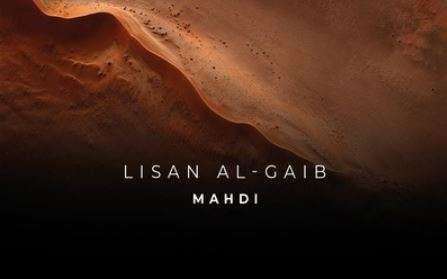As is known, a skull fossil belonging to a 12 or 13-year-old discovered in Malapa in 2008 was given the name "Australopithecus sediba". Between 2010 and 2013, six different articles about the said skull were published in Science magazine and it was declared among evolutionists as the so-called missing link that could be the ancestor of man.
Evolutionist claimed that A. Sediba, which is thought to have existed some two million years ago, predating Homo Erectus, must be the ancestor of man. As a result, various supposedly scientific articles were written, predicated on the claim that the fossil belonged to a transitional form due to some similarities it shared with Australopithecuses and some with humans. These articles made the headlines of many media outlets.
On 2010, when the articles were freshly published, we published our own articles refuting these claims. 1,2
At the annual meeting of the American Physical Anthropologists Association in 2017, this issue was re-addressed by Bill Kimbel, a paleoanthropologist at Arizona State University. The A. Sediba skull was examined; old claims were refuted one by one, and the fact that Sediba is not an ancestor of humans but merely resembles other Australopithecenes was accepted. Thus, the so-called human ancestor claim that had been kept up for seven years was rejected by evolutionists.
The claim versus the fact.
Narrow cheekbones, small teeth, a pronounced nose:
The features of the said skull belonging to a 13-year-old life form were said to bear a closer resemblance to humans than Australopithecus so it was introduced as a so-called pre-human transitional form. However, it is glaringly obvious that the juvenile fossil did not complete its development. Thus, it is impossible to compare it with the available adult fossils. Even if we isolate and closely monitor a human or an animal from a young age, many anatomical differences occur with age even in the same individual. A 15-year-old has an entirely distinct skeletal structure than a 5-year-old. Likewise, there are many differences between when he is 15 and when he is an adult. Therefore, it is impossible to reach an accurate conclusion about a fossil based solely on minor structural differences.
The most crucial factor impacting the development of cheekbones and teeth is found in eating habits. A life form, whose diet requires vigorous and frequent chewing, will accordingly develop stronger chewing muscles or they will grow weaker in the opposite case. The bone structures that muscles are attached to and teeth will also develop or remain narrow at the same rate. Note that it is environmental factors rather than genetic ones at work here; bones and muscles undergo change and development to the extent allowed by genes. This fact gives rise to great structural differences even between the separate individuals of the same species. In other words, the existence of multiple variations is not an indication of diverse species. Therefore, notions such as cheekbone width or teeth size are not reliable when it comes to the classification of species.
Narrow hip bone and long femurs:
Following the first skull finding in 2008, the ongoing excavation works on the same site this time yielded new fossil fragments belonging to an adult's hip bone and femurs. The ensuing speculations proclaimed that the fragments belonged to an adult A. Sediba. The narrow hip bone and long femurs of the life form were construed as being more suitable for standing and walking upright. However, there was practically no evidence suggesting that the two separate fossils belonged to the same species.
Age determination conducted on the fossils discovered in adjacent strata are based on the principle of determining the age of the strata where the fossil was found rather than the age of the fossil remain itself. This is a practice that leads to many possible misinterpretations. Fossils’ being found in the same strata and place is in no way an indication of the fact that they lived in the same period. Age determination of these layers comes with a margin of error as wide as 50,000 to100,000 years. Although 100,000 years may seem insignificant in terms of historical strata, it actually covers a long time period. Within this margin of error, numerous different life forms, even those who never shared a common time line, may be found in the same fossil layers. This fact shows how reliable linking fossil record can prove in providing evidence.
On another note, it is also quite astonishing that a narrow hip bone is considered sufficient for upright walking. Upright walking is a complex form of locomotion that requires many organs and systems from organs of balance to the spine, from the articulation system to hand-foot anatomy to work in harmony. It is obvious that narrowness of bone alone cannot be presented as evidence for upright walking. Many narrow-boned animals today are quadrupedal yet most of them cannot even stand on two legs for extended periods.
Brain volume
The Sediba is said to have a brain volume of 420 cm3, which amounts to the 95% of that of an adult's. As it stands, it is quite small compared to an average human's brain volume of 1200 to 1400 cm3. Evolutionists claim that brain volume was supposed to have increased over time until it reached the volume it has today. So, does fossil record have any traces of the gradual growth of brain volume? The answer is a definitive no! The brain volume of the first human is exactly the same as the contemporary humans,
This is a fact that evolutionists are very well aware of. They try to fill the huge gap in between with fake fossils or monkey fossils they try to pass off as humanoid, or they present ancient human fossils as those of monkeys. The aim here is to make it look like there is a gradual change at work. Australopithecus species have perfectly apish qualities while Homo fossils have perfectly human qualities. Evolutionist frauds that are occasionally put forward are the products of this desperation.
For example, a fossil that had been introduced in the past under the name "Homo habilis" as supposedly "humanoid" and distorted with the aim to fill the gap between Australopithecus and human turned out years later to actually belong to an ape fossil and had to be renamed as Australopithecus habilis. 3
Likewise, the fossil "Turkana boy" that was presented as the so-called evolutionary ancestor of modern humans turned out to have the exact same qualities as modern humans and not a different species. 4
Of course, we must not forget Ardi! Ardipithecus ramidus was introduced as a bipedal transitional form. Having reassembled the severely deformed hip bones in a laboratory with the help of their imaginations, evolutionists claimed that the life form was bipedal. This claim drew heavy criticism from other evolutionist circles as well. It was obvious from its feet and other qualities it possessed that Ardi was a perfect climber with a body unsuitable for upright walking. That is because Ardi was a bonobo chimpanzee. 5
Evolutionists' desperation
The fake or distorted fossil claims that have been produced for over a century actually offer the best proof for evolutionists' desperation. Fraud is a practice only resorted to in the absence of evidence. Unable to find even a single fossil that belongs to the transitional forms among near 700 million fossils at hand as they hoped to, evolutionists resorted to fraudulence. If species had really come into existence in a gradual manner, as evolutionists claim, there would have been many transitional forms among the myriad number of fossils; in fact, the fossil bed would have been brimming with transitional forms. However, all fossils at hand suddenly appear on the stage of history with all their qualities perfectly intact and continue their species without undergoing any change. In that case evolutionists have two options; they will either admit that transitional forms do not exist or try to keep their claims afloat by producing false evidence by altering and distorting fossils.
The first option is the sincere and scientific path. In the case of an absence of evidence, a scientist who conducts his scientific endeavors impartially will abandon the hypothesis and move on to working on new ones. The second path, on the other hand, is not a scientific but an ideological one; this path is paved on the exploitation of science for the sake of an atheistic ideology. So-called scientists are trying to keep their superstitious ideologies alive through supposedly scientific journals despite knowing the truth. Doing so brought success very easily a century ago due to lack of evidence and limited access to information. Evolutionists were able to easily make each other believe in the lies they invented. The impact of fabricated evidence would resound through decades. Today, however, along with the ever-growing scientific data and information having become largely accessible came the collapse of evolutionists' false ideologies; now everyone can clearly see how scientific data refutes evolution not to mention the fact that fake or misleading news can no longer have a long-lasting impact and are falsified within a few years at most. This situation is the definition of desperation for the evolutionist ideology. Evolutionists are no longer able to hold sway over large masses through their lies, and in fact, they merely humiliate themselves with their false claims.
Mr. Adnan Oktar's works and the impact they have made worldwide had played and will continue to play a huge role in exposing the evolutionists' deceits. The number of Darwinist news sites and publications is dwindling with each passing day. Evolutions are now having a hard time fabricating false evidence and deceiving people with fairy tales. We call on Darwinist scientists to assume a sincere and scientific demeanor on this matter and stop disregarding the evidence that brings about the collapse of the theory of evolution.
References:
- http://harunyahya.com/en/Makaleler/22770/A-second-embarrassing-Ardi-case-for-Darwinists-Australopithecus-Sediba
- http://harunyahya.com/en/Makaleler/22578/Why-are-Darwinists-so-determined-to-humiliate-themselves
- http://harunyahya.com/en/Evrim-Sozlugu/16417/Homo-habilis
- http://darwinism-watch.com/lie-of-human-evolution/the-claim-that-homo-erectus-was-a-primitive-species-is-nothing-but-prejudice
- http://darwinism-watch.com/transitional-forms-deceit/darwinists-we-apologize-once-again-we-were-also-mistaken-about-ardi/

